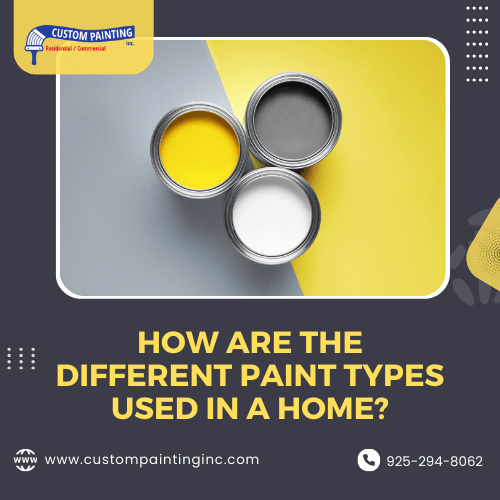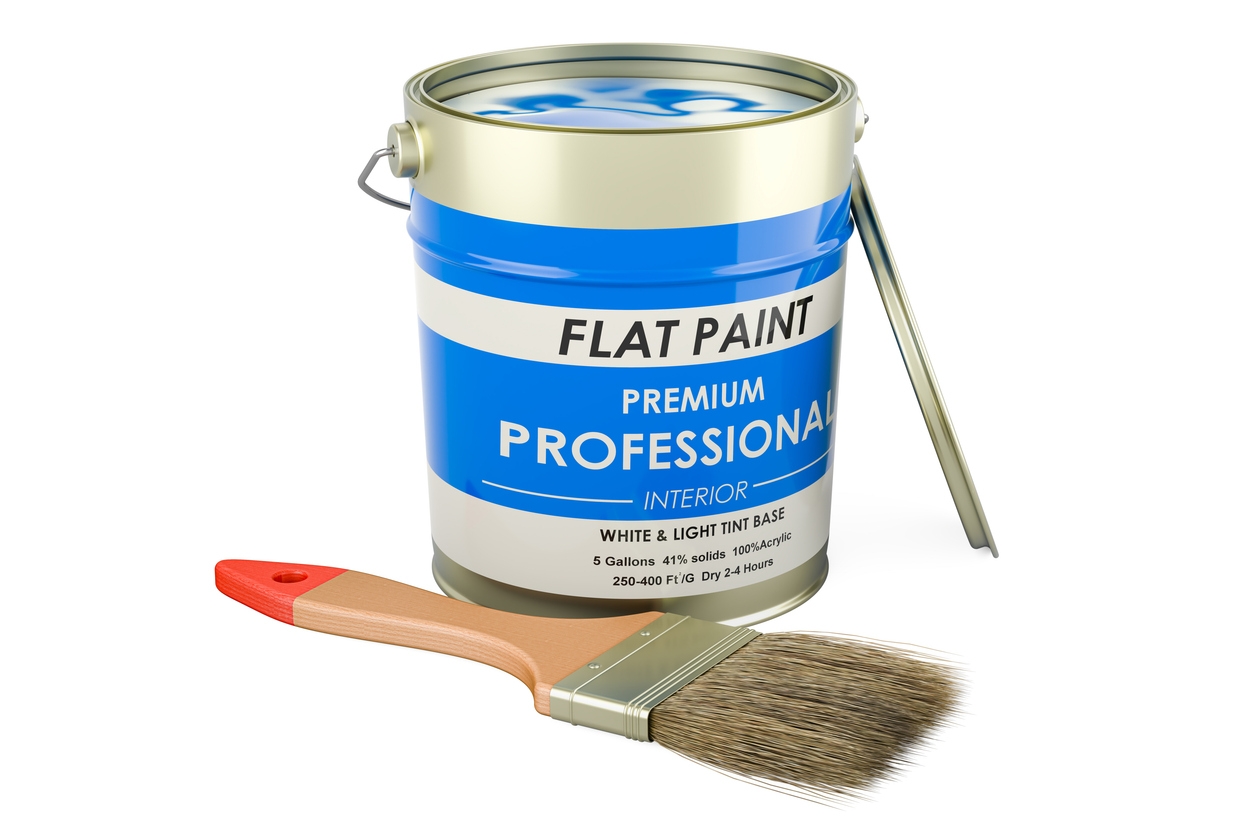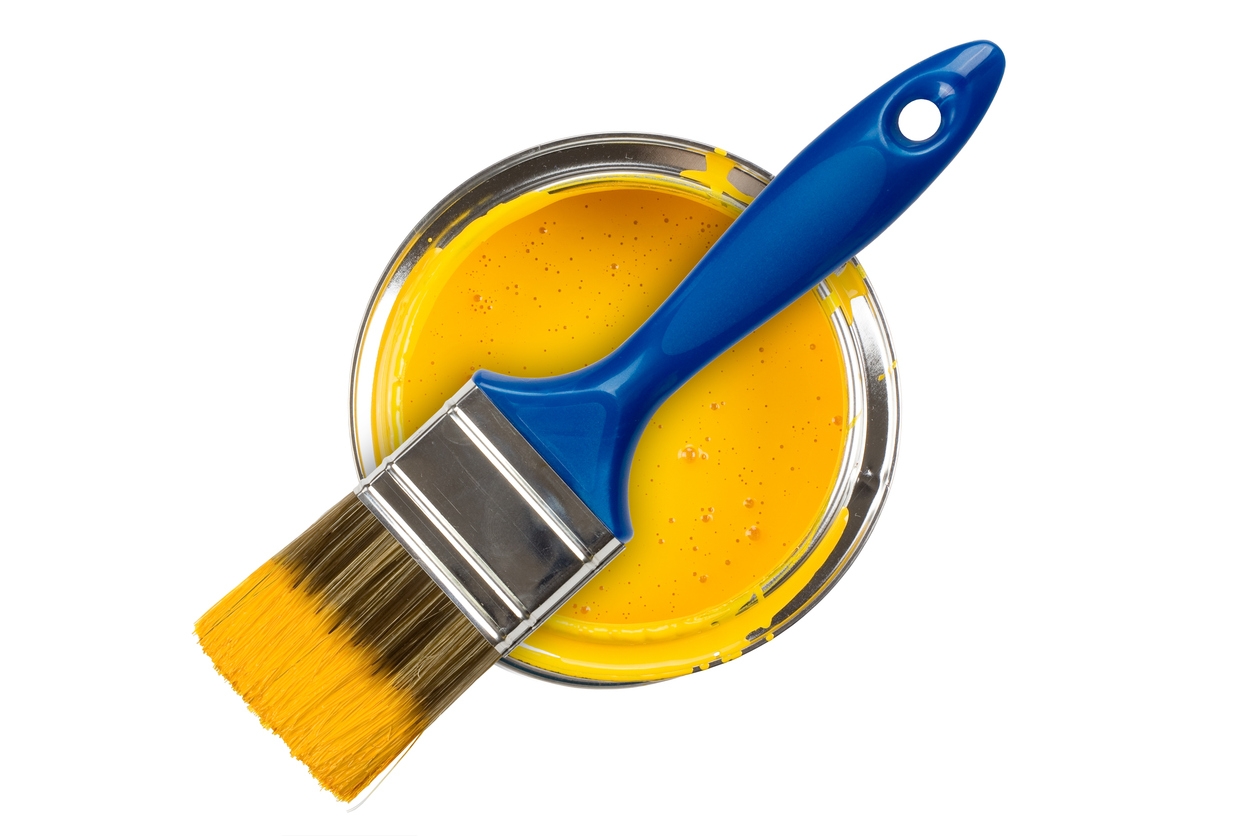Different paints are designed for specific purposes and surfaces. So, it is necessary to understand how and where to use them when working on Dublin, CA area projects. Continue reading below to learn about the various types of paint and their uses in a home so that you can make informed decisions for your painting projects.
What are the Different Paint Types for House Painting?
When it comes to residential painting, using the right type of paint can have a significant impact on the overall look of your home. The type of paint can either improve the appearance of the home or decrease its appeal. Here are the different types of paint you might use for your home.
Latex Paint
Latex paint is water-based and easy to clean up with soap and water. It dries quickly and has low odor, making it a popular choice for interior walls and ceilings. It is also durable and resistant to fading and is a great option for a range of colors for residential painting.
Oil-Based Paint
Oil-based paint is known for its durability and smooth finish. It takes longer to dry and requires mineral spirits for cleanup. This type of paint is ideal for trim, doors, and cabinets where a hard, glossy finish is desired.
Enamel Paint
Enamel paint can be water-based or oil-based and provides a hard, durable finish. It is great for surfaces that need to withstand wear and tear, such as doors, trim, and outdoor furniture. Enamel paint resists stains and is easy to clean.
Primer
Primer is used before applying the final coat of paint. It helps the paint adhere better to the surface and provides a uniform base. Primers can be latex or oil-based, depending on the type of paint you plan to use.
Matte Paint
Matte paint has a flat finish with no shine. It is good for hiding imperfections on walls and ceilings. While it is not as easy to clean as glossier paints, it gives a smooth, elegant look to interior surfaces.
Satin Paint
Satin paint has a soft sheen and is more durable than matte paint. It is easy to clean and works well in high-traffic areas like kitchens, bathrooms, and hallways. Satin paint strikes a balance between durability and appearance.
Semi-Gloss Paint
Semi-gloss paint has a noticeable shine and is very durable. It is resistant to moisture and stains, making it perfect for kitchens, bathrooms, and trim. Semi-gloss paint is easy to clean and maintain.
High-Gloss Paint
High-gloss paint provides a shiny, reflective finish. It is the most durable and easiest to clean of all the paint types. This paint is ideal for doors, trim, and areas that get a lot of use or need frequent cleaning.
Exterior Paint
Exterior paint is specially formulated to withstand weather conditions like rain, wind, and sunlight. It is available in both latex and oil-based options and is used for painting the outside of your home. It is designed to be durable and long-lasting.
How to Choose the Best Type of Paint for Your Home
As we have mentioned previously, choosing the right type of paint for your home can have a huge impact on achieving a beautiful and durable finish. Here are some tips to help you make the best choice.
- Consider the Room: Think about the room you are painting. For high-traffic areas like kitchens and bathrooms, choose durable paints like satin or semi-gloss. For bedrooms and living rooms, matte or eggshell finishes work well.
- Check for Moisture: In areas with high moisture, like bathrooms, use paint that is resistant to mold and mildew. Semi-gloss or high-gloss paints are good options for these spaces.
- Evaluate the Surface: The type of surface you are painting matters. Oil-based or enamel paints are ideal for wood trim and cabinets due to their durability. Latex paint is a good choice for walls and ceilings.
- Look at Color Choices: Different paint types can affect how colors appear. Matte paints offer a soft finish, while glossy paints enhance color vibrancy. Choose a finish that complements the look you want.
- Consider Maintenance: If easy maintenance is important, opt for paints that are easy to clean. Semi-gloss and high-gloss paints are easier to wipe down and keep clean compared to flat or matte finishes.
- Think About Durability: For long-lasting results, especially in high-use areas, select durable paint types. Enamel and oil-based paints provide strong finishes that can withstand wear and tear.
- Use Primer When Needed: Always consider using a primer, especially on new or repaired surfaces. Primer helps the paint adhere better and provides a uniform base, ensuring a smoother finish.
- Factor in Drying Time: Different paints have varying drying times. Latex paint dries quickly, making it convenient for quick projects. Oil-based paints take longer to dry but provide a harder finish.
- Check for VOCs: Volatile Organic Compounds (VOCs) can affect indoor air quality. Choose low or zero-VOC paints for a healthier home environment, especially in areas where you spend a lot of time.
- Budget Wisely: Higher-quality paints often cost more but can provide better coverage and durability. Consider your budget and the importance of long-term results when choosing paint.
Find the Best Painters for the Job
For the best results, you will need to find the right painters to apply specific types of paint. Here are some tips to help you choose the best professionals for the job.
- Check Experience: Look for painters with experience in applying the type of paint you need. Whether it’s latex, oil-based, or enamel, their expertise ensures better results.
- Ask for References: Request references from previous clients who had similar paint jobs. Contact these clients to ask about their satisfaction with the work.
- Review Portfolios: Examine the painters’ portfolios to see examples of their work with specific types of paint. This helps you gauge their skill and attention to detail.
- Read Reviews: Look at online reviews on platforms like Google and Yelp. Positive reviews indicate reliable painters who are likely to do a good job.
- Get Multiple Quotes: Obtain quotes from several painters. Compare their prices, services, and timelines to find the best fit for your needs and budget.
- Verify Credentials: Make sure the painters are licensed and insured. This protects you from liability and ensures they meet industry standards.
- Discuss Techniques: Talk to the painters about their techniques for applying the specific paint type. Their knowledge and approach can impact the final result.
Conclusion
Understanding the different types of paint and their uses can help you achieve the best results in your San Ramon, CA area home. By choosing the right paint for each surface, you can enhance the look and longevity of your home.
For professional help with your painting needs, you may contact us at Custom Painting, Inc. Call us at 925-866-9610 or fill out our Contact Form.



